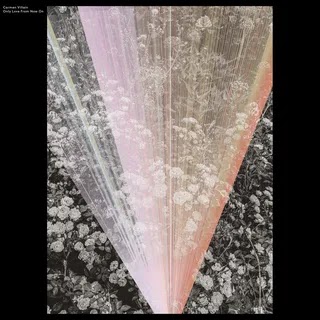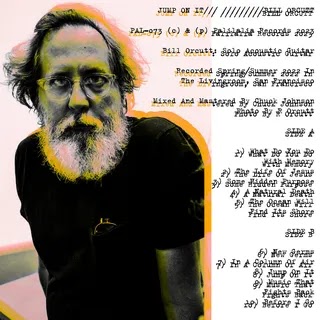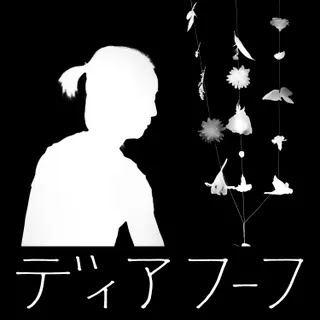The experimental artist’s latest project is the most dynamic, unpredictable album of her career—a collection of instrumental music that flows like an interconnected suite.
Twenty-three minutes into Carmen Villain’s fourth album, at the outset of the antepenultimate track, we hear something we’ve never heard from the Mexican-Norwegian artist before: the buoyant pulse of dub techno. Even for listeners who have kept pace with her gradual transformation from indie singer-songwriter to jazz-inspired ambient musician, this might come as a surprise. But it confirms just how far Villain has traveled since the fuzzboxed strumming and narcotic vocals of her 2013 debut, Sleeper. On two subsequent albums and two more EPs between 2017 and last year, she laid down her mic and electric guitar and sank deep into the folds of synthesizers, drum machines, flute, and electronic tools. The turning point in this metamorphosis was her 2020 release Affection in a Time of Crisis, whose billowing, beatless shapes reflected the marble contours—and 23-second reverb—of the mausoleum where she recorded it. But even as her music has grown more abstract, she has simultaneously hinted at alternate paths that it might take, commissioning gently pulsing remixes from leftfield electronic musicians like DJ Python, Parris, and Huerco S. Their rhythmic energies feed back into “Subtle Bodies,” a high point on her most dynamic—and unpredictable—album yet.
From a carefully selected set of softly rounded shapes and muted tonal choices, Villain wrangles a surprisingly varied selection of instrumental tracks that flow together like the interconnected parts of a suite. All seven songs are shot through with an abiding sense of mystery. When there are rhythms, they thud like an object being dragged into the woods by an animal. Her imaginary landscapes are illuminated by a muted glow, like the mist burning off fields at dawn. Aside from occasional telltale electronic processing, much of the album’s palette appears to have sprung from acoustic sources, though it’s often impossible to pinpoint the source of a given sound. In the brief “Liminal Space,” an unsteady rhythm might be flat stones clacked together, or hard footsteps echoing down a dry riverbed.
Like a creation story, Only Love From Now On begins with breath: Wind instruments provide its essence and define its shape. In the opening “Gestures,” Norwegian trumpeter Arve Henriksen’s horn is run through an electronic harmonizer, recalling Jon Hassell’s eerie, prismatic sweeps. Over a ritualistic pulse of gong-like tones and wooden percussion, Henriksen plays an eloquent improvised lead, while in the background, Villain smears its echoes across the stereo field—a richly enveloping mix of sounds that feels less like a song than a four-dimensional environment expanding around you. In “Portals,” harmonized and layered clarinets waft above a lonely percussive loop reminiscent of Seefeel’s Succour. And in the eight-minute title track, flutist Johanna Scheie Orellana, a frequent collaborator of Villain’s, traces languid lines over a drifting backdrop of glowing chords, weaving between gentle consonance and hissing dissonance. Her timbre often has a wheezy tone that emphasizes the physicality of the breath filling her instrument.
There are broader themes embedded in these songs. “Gestures” references Hannah Wilke’s eponymous 1974 video-art piece about the male gaze, and “Silueta” and “Subtle Bodies” are homages to the Cuban-American artist Ana Mendieta’s feminist works, which traced lines between nature, violence, and the female body. In the context of Only Love From Now On, those hints are just that: breadcrumbs that might lead curious listeners to a deeper understanding of Villain’s processes and motivations, as well as indicators of places she might take her music in the future. It’s difficult to address complex ideas like these in ambient compositions, of course, and to its credit, Only Love From Now On never feels like it is awkwardly shoehorning anything extraneous into the music. What matters is all right there in the sounds themselves, and in the way minuscule, easy-to-miss details combine to create almost subliminally evocative clusters of tone and texture.
That’s particularly evident in the late-album pairing of “Subtle Bodies” and “Silueta,” which together lay out the record’s full stylistic scope. “Subtle Bodies” begins with a rhythm that might be the sound of feet crunching through snow. Then, like a film camera pulling back to reveal the vastness of the landscape, Villain widens the frame to admit glowing chords, whooshing white noise, chest-caressing sub-bass, and, eventually, layer upon layer of almost inaudibly harmonized wind instruments, pale as watercolors. The musical inspiration comes from dub techno of the 1990s—artists like Pole, Vainqueur, and Vladislav Delay—but her materials seem less electronic than elemental: dripping snowmelt, scraping metal, frosted air glistening in the morning sun. The album’s most complex, densely woven track, “Subtle Bodies” gives way to the record’s simplest: “Silueta” is made of ambiguously looped and layered woodwind sounds drawn out and processed electronically, twisting in slow motion like coils of ticker tape. This patient, meditative song feels as natural as breathing; one is struck by both its absolute economy of materials and the wealth she generates with them. After nearly a decade of music-making, “Silueta” is evidence of just how much Villain has stripped away from her music; for now, anyway, this feels like her vision distilled to its essence.
















0 comments:
Post a Comment